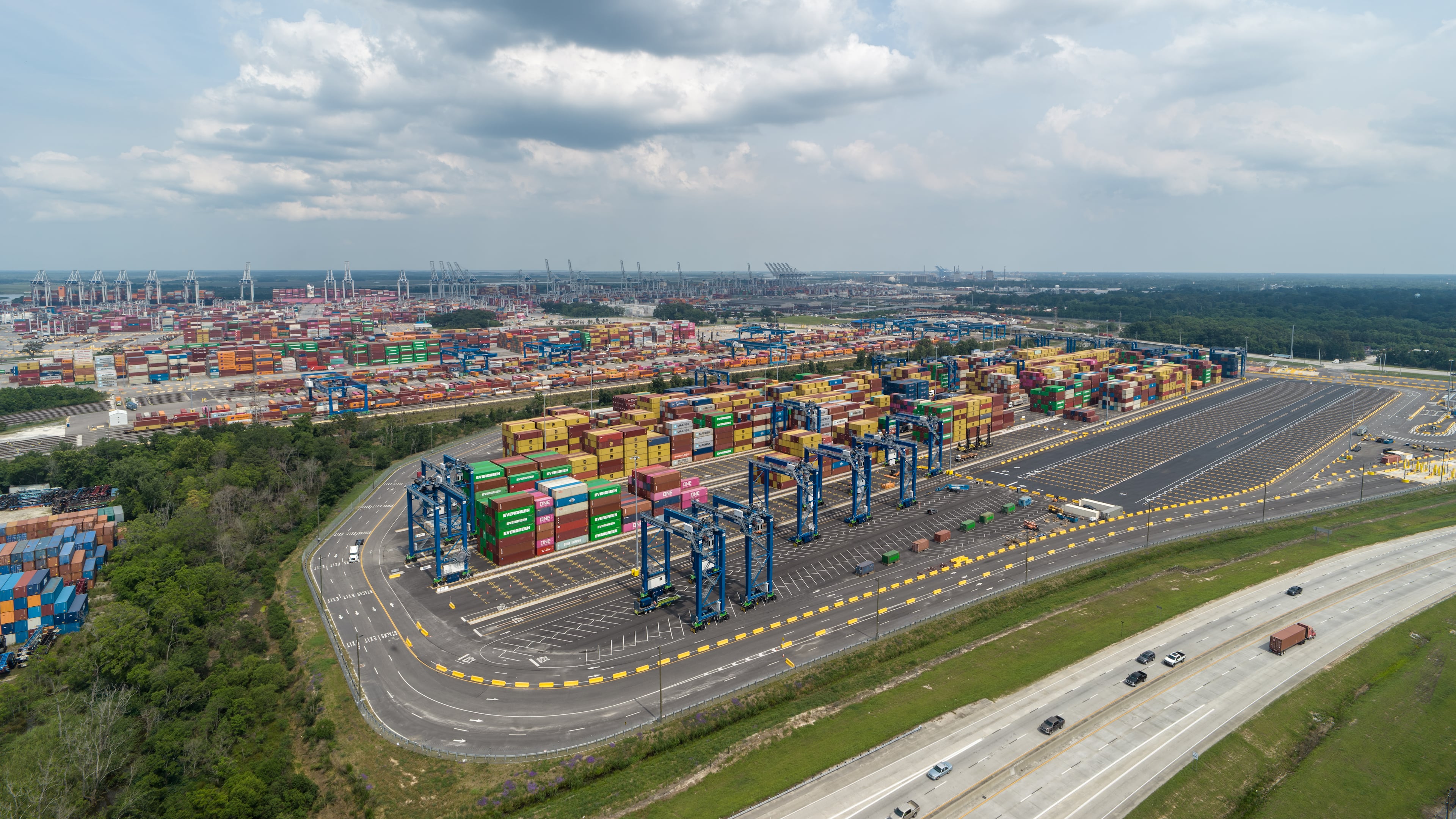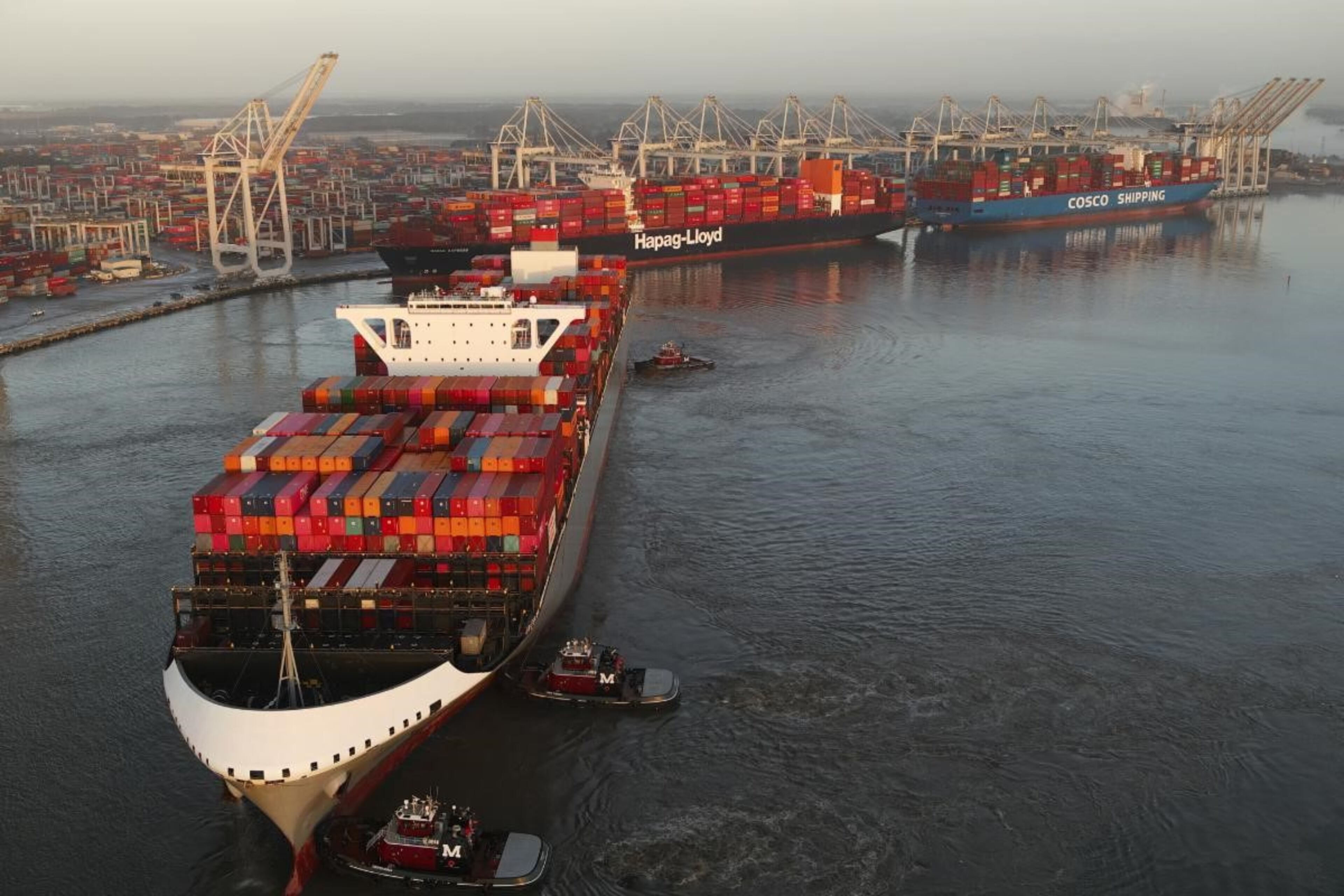Georgia’s ports report strong month despite China tariff effects

SAVANNAH ― Port terminals exist to move cargo, not as places to store stuff.
And the Georgia Ports Authority’s Savannah facility had near-record traffic in May, moving 509,000 containers on and off ships, just the eighth time it has topped 500,000 in one month.
But that was thanks in part to recently expanded storage space that allowed importers to keep goods at the port and wait for U.S.-China tariffs to come down.
Goods don’t face tariffs until they leave the port, and they could stay in the new 90-acre container yard at what is known as Garden City Terminal West while trade officials negotiated down a 145% tariff to 30% for Chinese imports.
China is Georgia’s biggest trading partner, with imports from the Asian nation making up about 40% of the port’s import business. The Garden City Terminal West storage yard was at 40% capacity for much of May.
While June has seen a significant slowdown from a multi-week, trans-ocean shipping interruption because of the U.S.-China trade war, port officials remain confident Savannah cargo container volumes will close out the fiscal year, which ends June 30, ahead of last year.
The port needs to clear fewer than 100,000 container units in June to beat 2024’s traffic and should challenge 2021 totals for the second-best year on record.
“Garden City Terminal West was specifically built for long-term storage for import and export cargo,” authority CEO Griff Lynch said. “Our customers tell us they have been looking for a service option like this to manage supply chain speed fluctuations.”
The container yard was constructed in response to the post-COVID logjam of 2021 and 2022. The coronavirus pandemic shuttered manufacturing for a time, but demand for goods grew as consumers spent months at home.
Once factories restarted and began to fill orders, the volume overwhelmed supply-chain networks. Containers were coming off ships faster than distributors and retailers could move products to customers. The backlog forced the Georgia Ports Authority to open temporary storage yards away from the terminal as dozens of cargo vessels waited offshore for days to unload their containers.
The ports authority’s new storage yard — enough for 20,000 containers and manned by 15 rubber-tired gantry cranes — came online in a phased approach in 2023 and 2024.
At the time the expansion was announced, the ports authority predicted the additional storage space would translate to container growth in Savannah.
“That’s important because the Southeast is the fastest-growing consumer market in the country,” said Bruce Kuzma, the ports authority’s vice president for ocean carrier and non-container sales.
Future tariff threats did not contribute to the decision to build the storage yard, a ports authority official said.

The $200 million project was part of a larger infrastructure expansion tied to the renovation of Garden City Terminal’s largest ship dock, known as Berth 1. The berth can handle the latest generation of vessels, including those too wide to travel through the Panama Canal.
Savannah is seeing more trans-Atlantic ship traffic from India and other manufacturing hubs in southwest Asia. Those vessels carry thousands more containers than the ones that come from China. They are projected as the major driver of future business as more manufacturers diversify their operations beyond China in what is known as the “China Plus One” shift.
Infrastructure investments, such as the expanded storage yard in Savannah, should help attract China Plus One-related cargo, said the National Retail Federation’s Jonathan Gold.
“Savannah and other ports along the East Coast are poised to take advantage of the shift,” Gold said. “They’ve proven their ability to grow and handle the volumes.”


